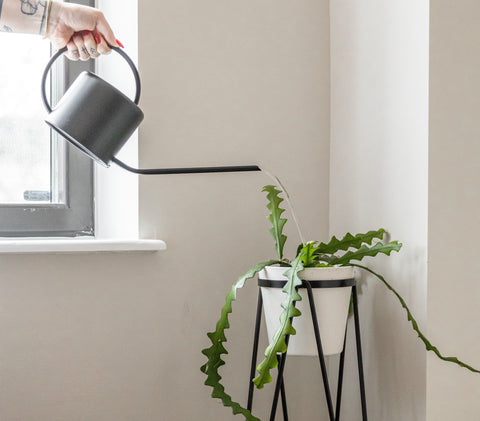Unlocking the Mystery: How Much Water Does Your Plant Really Need?

You've embarked on a journey as a plant parent, nurturing a diverse botanical family. While you might have a grasp on how often to water your green companions, there's a crucial piece of the puzzle that often gets overlooked: the amount of water to give. Just like a symphony, achieving the perfect harmony of hydration requires precision and understanding. Let's dive into the world of water measurement, exploring the specific needs of various plant types and mastering the art of tailored watering.
The Art of Gauging: Watering with Precision
You wouldn't serve the same portion to a marathon runner and a casual walker. Similarly, different plants have varying water requirements based on factors such as their natural habitat, growth stage, and the size of their root systems. The key lies in embracing this diversity and learning to listen to your plants' cues.

Succulents and Cacti: These arid-loving wonders prefer a "sip, don't soak" approach. Water until you notice liquid escaping from the drainage holes, then wait until the soil is completely dry before repeating the process. Aim for a moisture level resembling a lightly damp sponge.
Tropical Beauties like Calatheas and Ferns: These leafy charmers thrive in consistently moist but not waterlogged soil. Water thoroughly until water starts to drain from the bottom, ensuring that excess water doesn't accumulate in the saucer.
Alocasias and Philodendrons: Strike a balance for these tropical wonders. Allow the top inch of soil to dry before watering. Keep the soil evenly moist, but never soggy. Imagine a gentle rain shower rather than a heavy downpour.
Sensational Orchids: Orchids are the divas of the plant world. Water sparingly, usually once every 1-2 weeks. Water until the roots turn a silvery color, then allow the potting medium to dry out slightly before rewatering.
Classic Houseplants like Spider Plants and Pothos: These versatile companions prefer a moderate approach. Water when the top inch of soil feels dry, allowing the water to soak through and drain. Avoid letting them sit in standing water.

Delving into Depth: Reading Your Plant's Signals
Learning the language of your plants is like nurturing a profound friendship. Keep an eye out for these telltale signs:
Wilting: If your plant's leaves are drooping, it might be thirsty. However, it's essential not to jump to conclusions, as overwatering can also lead to wilting.
Soil Check: Insert your finger into the soil. Depending on the plant type, if it feels dry at the listed depth above, it's time to water. If it's still slightly damp, hold off for a day or two.
Weight Test: Lift your pot before and after watering. You'll develop a sense of how heavy it feels when adequately hydrated versus when it's becoming dry.
Unveiling the Secrets of the Root System: Lift your plant gently from its pot (if feasible) to inspect the roots. Healthy roots are plump and white, while overly dry roots may appear shriveled, mushy, or black.

Customized Care: A Symphony of Watering
Remember, each plant is a soloist in this symphony of growth. While these guidelines offer a strong foundation, your individual plant's needs may vary. Take the time to observe, adapt, and refine your watering routine. As your bond with your plants deepens, you'll become an expert at deciphering their unique language and providing them with the precise amount of water they crave.
Explore our collection online and continue your journey as a nurturer of nature. Each plant has its story to tell, and together, we're crafting a beautiful narrative of growth and care. Stay tuned for more insights and botanical inspiration. Happy watering!